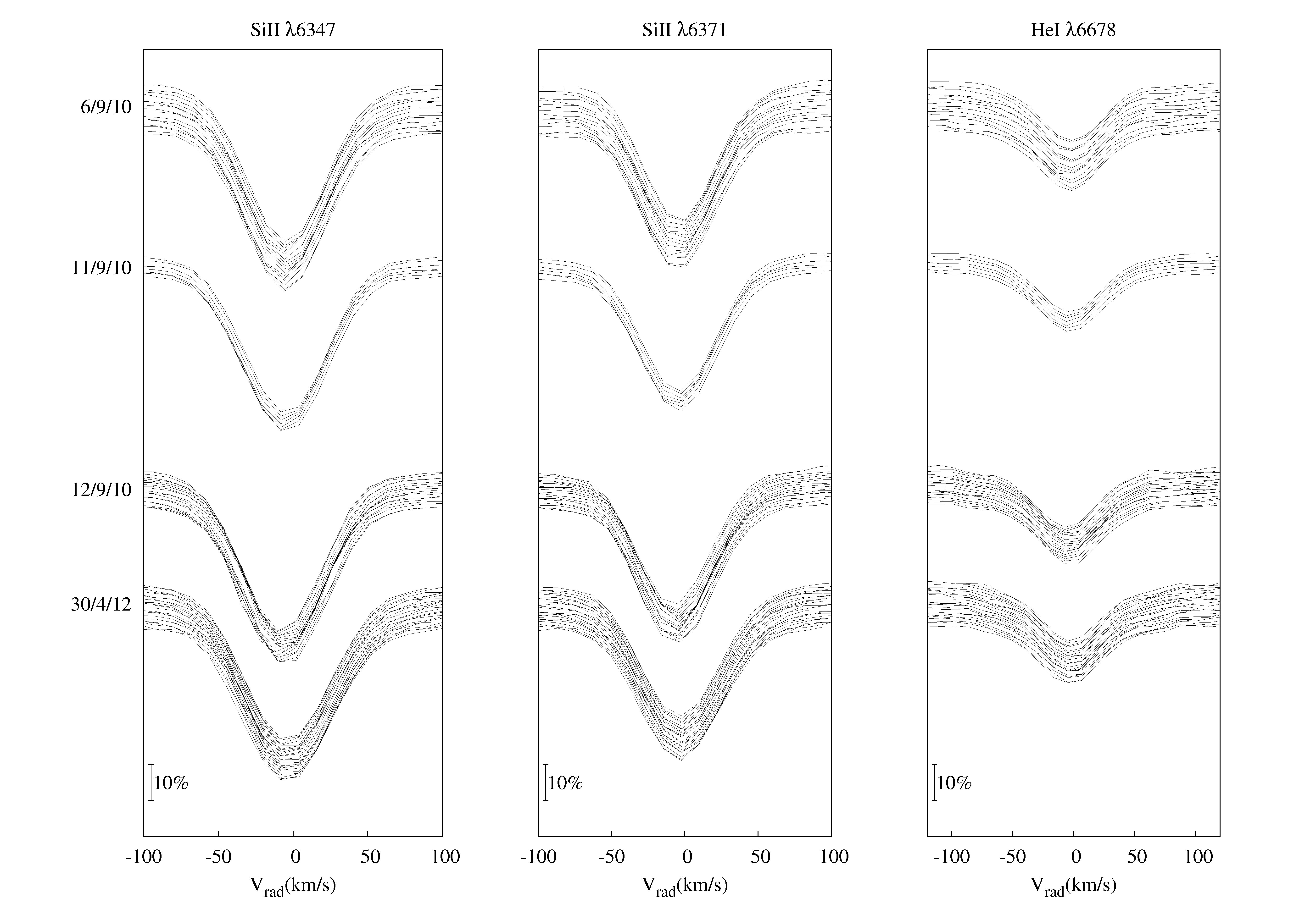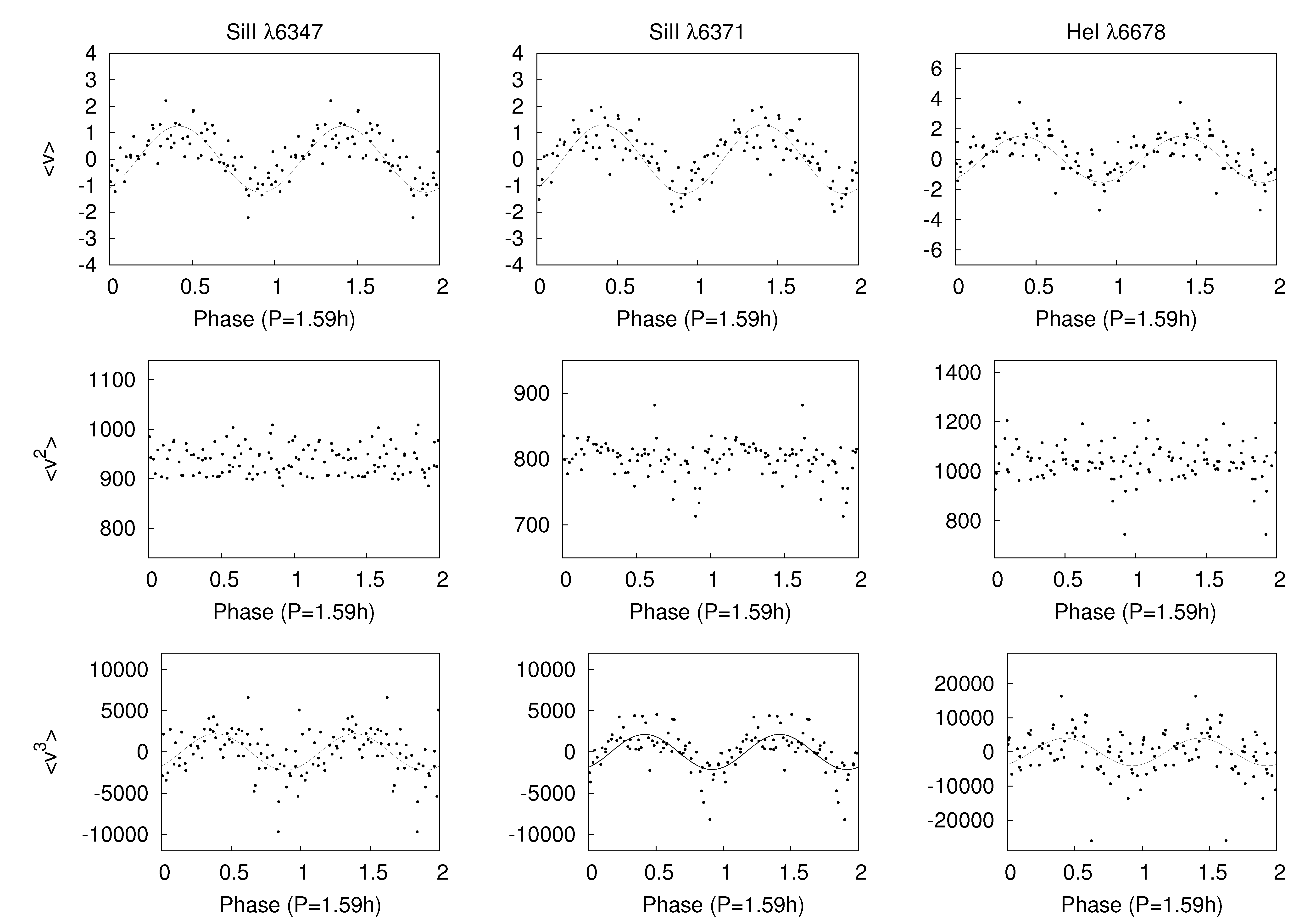Line-profile variability and excess profile broadening (usually referred to as
macroturbulence) are the two main characteristics of blue supergiants (BSGs).
A link between these two characteristics has recently been found, which suggests
that they have a common physical origin - stellar pulsations. The presence of
pulsations in some BSGs has been established from both spectroscopic and
photometric observations. Updated
computations revealed that the pulsating BSGs are located within an instability
domain in which predominantely higher g-modes can be excited, while at the hot
end of this instability domain p-modes could be excited simultaneously, resulting
in mixed modes. The periods attributed to these pulsations are on the order of
hours to about one day (p-modes) and 2-10 days (g-modes).
Using the Ondřejov 2m-telescope, we found indications for line-profile variability
in the late-type BSG star
HD 202850. This is shown in the folling plot
for three photospheric lines.
We analyzed the variability by means of the moment method. The first and third
moment of all three lines show a periodic behaviour, and a period
of P = 1.59 h was obtained (see the following figure). The second moment
is rather noisy making it difficult to unambiguously confirm a periodic behaviour.
However, indications for a double sine seems to be present. If true, this would
speak in favour of an axisymmetric mode.
The stellar parameters of HD 202850 place this star outside any known
instability domain. Also, its very short period disagrees with periods
of g-modes predicted for late B-type supergiant stars. HD 202850
is hence a very interesting object and a challenge for asteroseismology.
Related publications :
Kraus, Tomić, Oksala, & Smole, 2012, A&A, 542, L32

